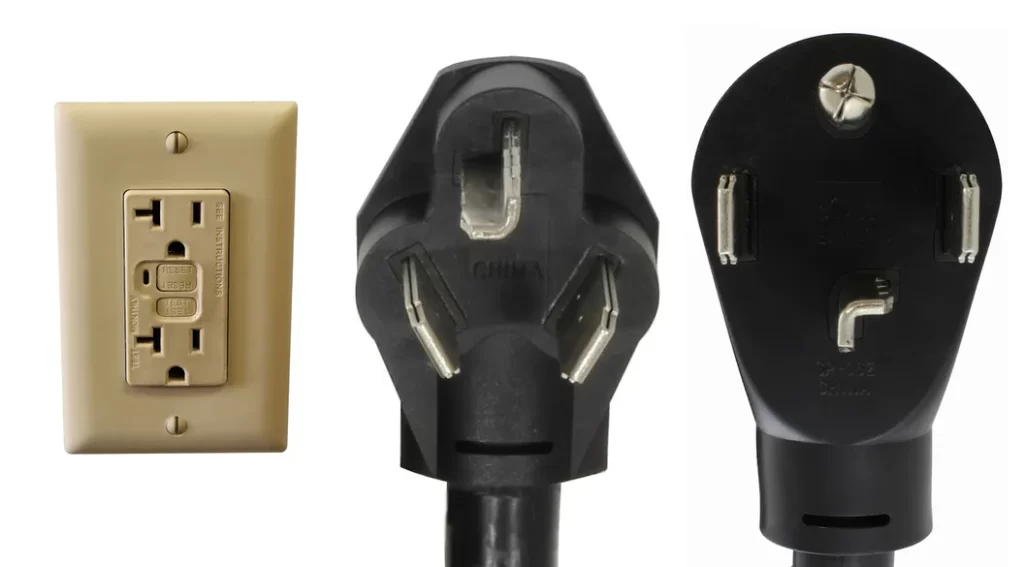When it comes to installing a dryer plug, safety and convenience are paramount. Proper installation not only ensures that your dryer operates efficiently but also minimizes potential hazards. The focus of this article is to explore the question: “how high should dryer plug be on wall?” This is a crucial consideration for anyone setting up a laundry area, whether in a home or a commercial setting. By understanding the optimal height for dryer plugs, you can enhance both the functionality and safety of your laundry space.

Understanding Dryer Plug Requirements
Types of Dryer Plugs
Dryer plugs come in different configurations, primarily 3-prong and 4-prong types. The 3-prong plug was standard in older homes, but due to safety concerns, the 4-prong plug is now the norm in newer installations. The 4-prong plug includes a separate ground wire, which reduces the risk of electrical shock and is compliant with modern electrical codes.
Electrical Requirements
When installing a dryer plug, it’s essential to consider the voltage and amperage requirements. Most dryers operate on 240 volts and require a 30-amp circuit. Using the correct wire gauge is crucial to handle the electrical load safely. A wire that is too thin can overheat, posing a fire risk. Always ensure that your wiring matches the specifications of your dryer to prevent any electrical issues.

Recommended Heights for Dryer Plugs
General Guidelines for Installation Heights
The height at which you install your dryer plug can significantly impact its accessibility and safety. Experts generally recommend placing dryer plugs between 36 to 48 inches from the floor. This range allows for easy access while keeping the plug out of reach of small children. Such positioning also accommodates the typical height of most dryers, ensuring that cords are neither too taut nor too loose.
Specific Height Recommendations Based on Dryer Types
Different dryer configurations may require adjustments in plug height. For stackable dryers, which are often used in compact spaces, the plug might need to be positioned higher to accommodate the vertical setup. In contrast, traditional side-by-side dryers can adhere to the standard height recommendations. Additionally, the layout of your laundry room or closet can influence the optimal plug height, so it’s essential to consider the specific setup of your space.
Safety Considerations
Importance of Proper Height for Accessibility
Ensuring that dryer plugs are installed at an accessible height is not just about convenience; it’s also about compliance with the Americans with Disabilities Act (ADA). This act mandates that facilities be accessible to all users, including those with disabilities. By installing plugs at a height that is reachable for everyone, you promote inclusivity and ease of use.
Avoiding Hazards
Improper installation heights can lead to several hazards. Plugs that are too low may be easily accessible to children, posing a risk of electrical shock. Conversely, plugs that are too high can be difficult to reach, leading to potential strain or injury when plugging in or unplugging the dryer. It’s crucial to find a balance that maximizes safety for all users.
Installation Tips and Best Practices
Tools and Materials Needed
Before you begin the installation process, gather the necessary tools and materials. You’ll need a level, drill, electrical tape, and the appropriate outlet box. Having these items on hand will streamline the installation process and ensure that you can complete the task efficiently.
Step-by-Step Installation Process
- Measure and Mark: Determine the optimal height for your plug and mark the spot on the wall.
- Cut the Opening: Use a drill to create an opening for the outlet box.
- Install the Box: Secure the outlet box in place, ensuring it is level.
- Wire the Outlet: Connect the wires to the outlet, following the manufacturer’s instructions.
- Secure the Outlet: Attach the outlet to the box and cover it with a faceplate.
Common Mistakes to Avoid
Avoid these frequent errors during installation:
- Incorrect Height: Ensure the plug is neither too high nor too low.
- Improper Wiring: Double-check connections to prevent electrical issues.
- Lack of Leveling: Use a level to ensure the outlet is straight.
Frequently Asked Questions (FAQ)
How high should dryer plug be on wall?
The recommended height for a dryer plug is typically between 36 to 48 inches from the floor. This range provides a balance between accessibility and safety.
Can I install a dryer plug myself?
While it’s possible to install a dryer plug yourself, it’s crucial to have a basic understanding of electrical systems. If you’re unsure, it’s best to consult a professional to ensure the installation is safe and compliant with local codes.
What if my dryer doesn’t fit the standard height?
If your dryer doesn’t fit the standard height, consider adjusting the plug height to accommodate your specific setup. It’s essential to ensure that the plug is easily accessible and that the cord is not under tension.

